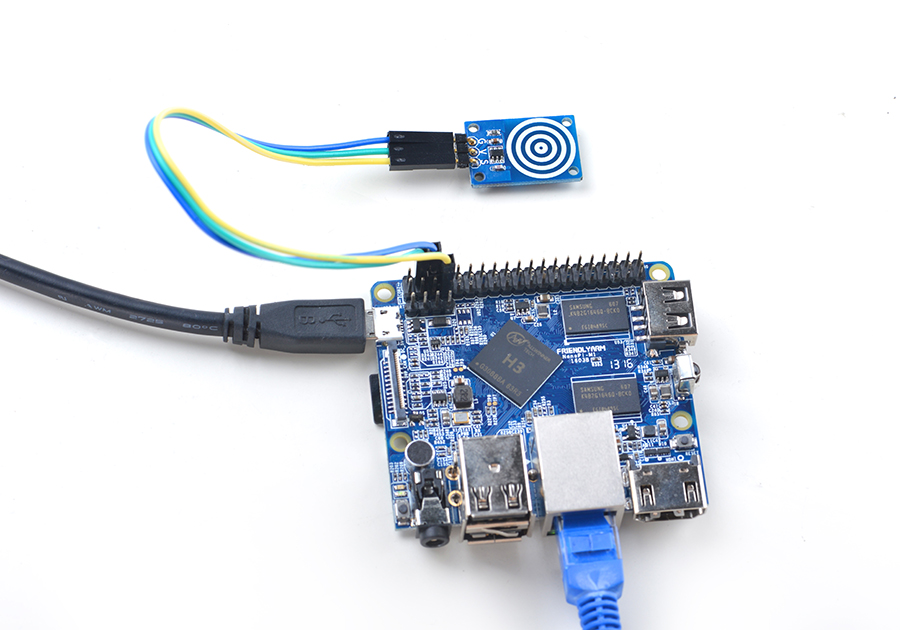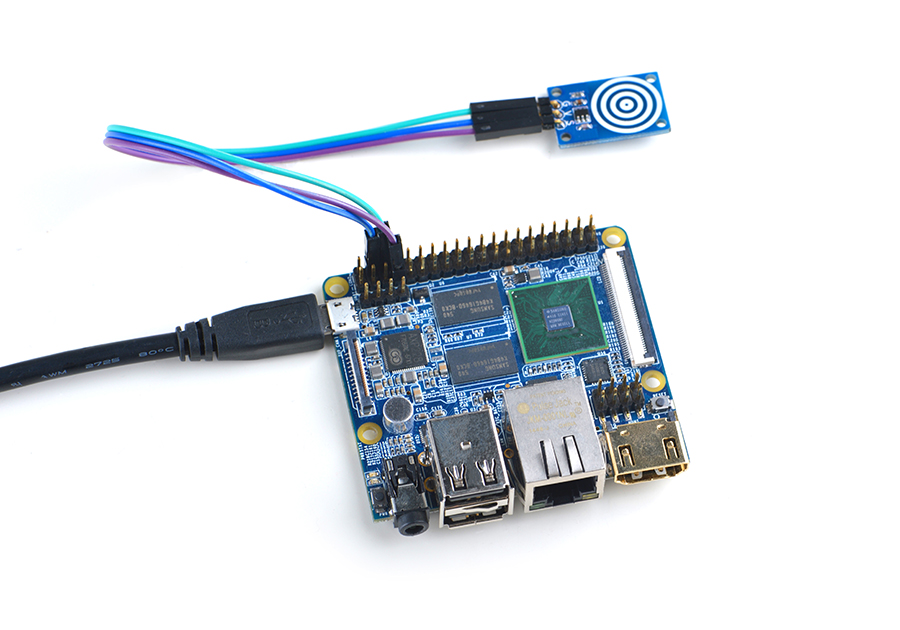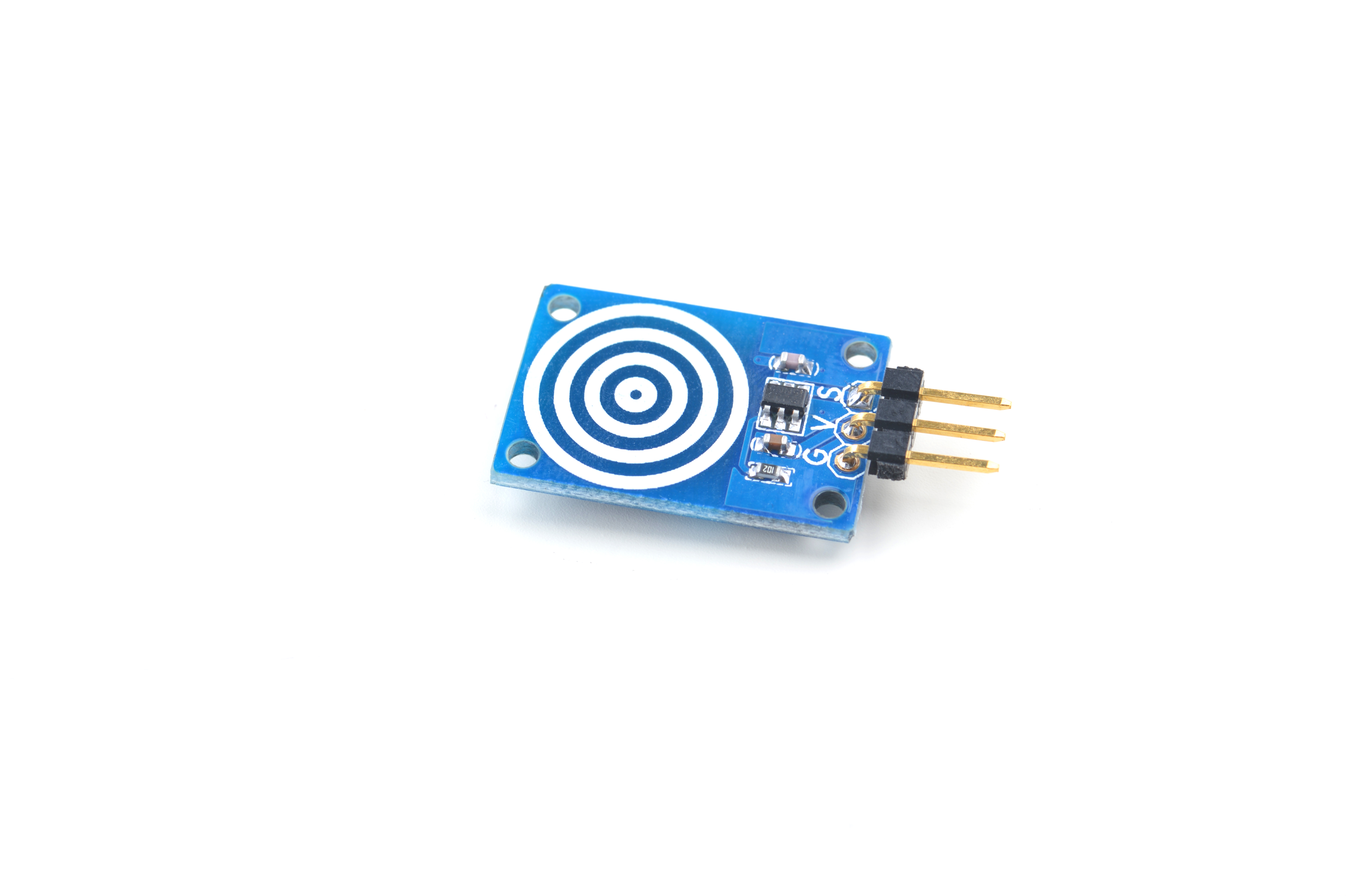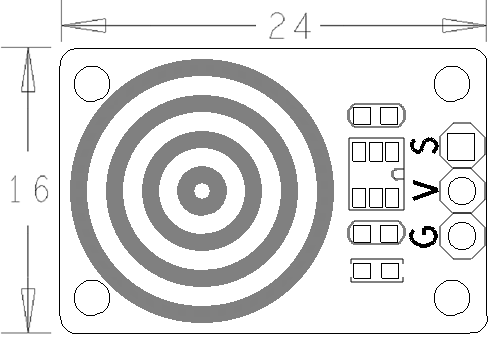Difference between revisions of "Matrix - One Touch Sensor"
(→Basic Device Operation) |
(→Basic Device Operation) |
||
| Line 23: | Line 23: | ||
==Basic Device Operation== | ==Basic Device Operation== | ||
| − | The TTP223 is a one key capacitive touch pad detector IC. It measures changes of electric charges stored in | + | The TTP223 is a one key capacitive touch pad detector IC. It measures changes of electric charges stored in the touch pad electrode with parasitic capacitance attached to an insulator :acrylic, glass, porcelain, wood and etc. |
==Applications== | ==Applications== | ||
Revision as of 00:09, 22 June 2016
Contents
1 Introduction
- The Matrix One_Touch_Sensor is a digital one capacitive touch key module. It uses the one key capacitive touch pad detector IC TTP223. It has a touch key with stable touching detection. It is designed for replacing traditional direct button key with diverse pad size.By default it outputs low. When a finger touches the touch key it outputs high.
2 Features
- Standard 3Pin interface
- PCB dimension(mm): 16 x 24
- Pin Description:
| Pin | Description |
| S | GPIO |
| V | Supply Voltage 5V |
| G | Ground |
3 Basic Device Operation
The TTP223 is a one key capacitive touch pad detector IC. It measures changes of electric charges stored in the touch pad electrode with parasitic capacitance attached to an insulator :acrylic, glass, porcelain, wood and etc.
4 Applications
4.1 Connect to NanoPi M1
Refer to the following connection diagram to connect the module to the NanoPi M1:

Connection Details:
| Matrix-One_Touch_Sensor | NanoPi M1 |
| S | Pin7 |
| V | Pin4 |
| G | Pin6 |
4.2 Connect to NanoPi 2
Refer to the following connection diagram to connect the module to the NanoPi 2:
Matrix-One_Touch_Sensor_nanopi_2
Connection Details:
| Matrix-One_Touch_Sensor | NanoPi 2 |
| S | Pin7 |
| V | Pin4 |
| G | Pin6 |
4.3 Connect to NanoPi M2 / NanoPi 2 Fire
Refer to the following connection diagram to connect the module to the NanoPi M2/ NanoPi 2 Fire.

Connection Details:
| Matrix-One_Touch_Sensor | NanoPi M2 |
| S | Pin7 |
| V | Pin4 |
| G | Pin6 |
4.4 Connect to NanoPC-T2
Refer to the following connection diagram to connect the module to the NanoPC-T2:
Matrix-One_Touch_Sensor_NanoPC-T2
Connection Details:
| Matrix-One_Touch_Sensor | NanoPC-T2 |
| S | Pin15 |
| V | Pin29 |
| G | Pin30 |
5 Compile & Run Test Program
Boot your ARM board with Debian and copy the matrix code:
$ apt-get update && apt-get install git $ git clone https://github.com/friendlyarm/matrix.git
If your cloning is done successfully a "matrix" directory will be generated.
Compile and install Matrix:
$ cd matrix $ make && make install
Run test program:
$ matrix-gpio_intNote: this module is not plug and play therefore before running the module please make sure it is connected to an ARM board.
Here is what you should observe:
Waiting event... Device[0] value is 1
When you touch the module's active area an event will be triggered and detected.
6 Code Sample
This Matrix code sample can work with all the ARM boards mentioned in this module's wiki. The name of this code sample is "matrix-gpio_int". Here is its source code:
int main(int argc, char ** argv) { int i, board; int retSize = -1; char value[ARRAY_SIZE(dev)]; if ((board = boardInit()) < 0) { printf("Fail to init board\n"); return -1; } if (argc == 2) dev[0].pin = atoi(argv[1]); system("modprobe "DRIVER_MODULE); signal(SIGINT, intHandler); if (board == BOARD_NANOPI_T2) dev[0].pin = GPIO_PIN(15); printf("Use GPIO_PIN(%d)\n", dev[0].pin); if ((devFD =sensorInit(dev, ARRAY_SIZE(dev))) == -1) { printf("Fail to init sensor\n"); goto err; } printf("Waiting event...\n"); if ((retSize = sensorRead(devFD, value, ARRAY_SIZE(dev))) == -1) { printf("Fail to read sensors\n"); } if (retSize > 0) { i = 0; for (i=0; i<retSize; i++) { printf("Device[%d] value is %d\n", i, value[i]); } } sensorDeinit(devFD); err: system("rmmod "DRIVER_MODULE); return 0; }
For more details about this APIs called in this code sample refer to Matrix API reference manual
7 Resources
8 Update Log
8.1 June-22-2016
- Created English wiki

